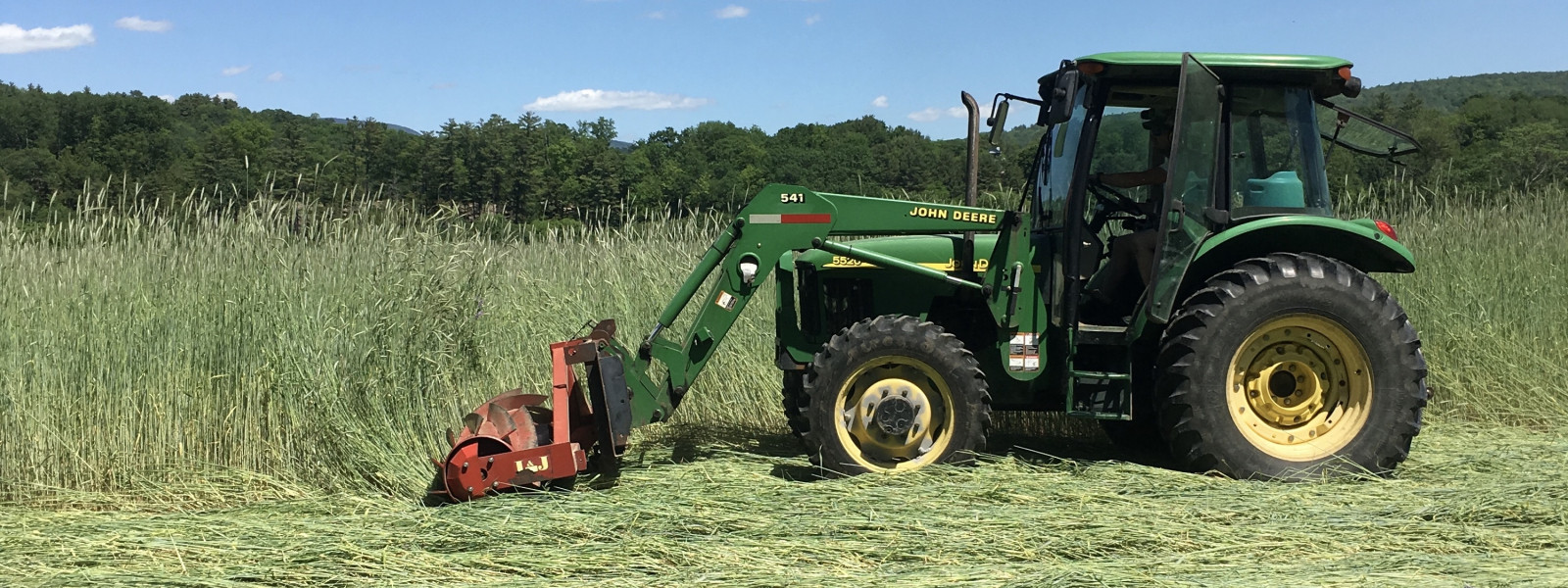Teen Fellow Blog: Native & Invasive Plants at Cedar Circle
Molly Kimber, 2024 Teen Farm Fellow, is going into her junior year at St. Johnsbury Academy. She worked as a cashier at a pizza place prior to starting at Cedar Circle Farm. Her interests include outdoor activities such as skiing and hiking as well as art. She says that this program has taught her many new things relating to agriculture and sustainability. Molly was originally interested in this program because she wanted to learn more about sustainability and the environment along with wanting to work outside during the summer.
Native & Invasive Plant Species at Cedar Circle
The Teen Farm Fellows met with Ben and Brooke, from the Intervale Center, by a hedgerow that lines the overflow parking area at Cedar Circle Farm. This hedgerow included many invasive species in addition to some native species. Our goal for the day was to identify and remove most, if not all, of the invasives, which included buckthorn, bittersweet, and Virginia creeper, and to replace them with natives.

Invasive species like these get introduced to new ecosystems by being transported either by humans or through natural dispersal such as wind or currents. They then prosper in this new environment because they have very little competition and the opportunity to take over space and resources. One of the interesting drawbacks is the impact on wildlife. For example, the invasive honeysuckle plant grows red berries that are commonly eaten by birds. However, the berries have no nutritional value, and therefore when the birds fill their stomachs with them, they get sick from the lack of nutrients. The invasive species take away many things from native species including nutrients, water, and habitat space. This is why it is important to remove invasive species.

We removed the invasive species by either pulling with our hands or using tools such as loppers and hand saws. Immediately after we began taking out the invasives we noticed plenty of space open up that could potentially let native species flourish. We succeeded in removing many of the invasive species present in the hedgerow and began planting the new plants that the Intervale Center grew in their nursery, including speckled alder and red osier dogwood. This entire process felt extremely rewarding, from identifying the invasive species to removing them and replanting healthy native species in their place.
Replacing invasive species with native plants supports sustainable agriculture because it attracts pollinators, reduces runoff, and increases biodiversity. In addition, native plants live symbiotically together unlike invasive plants who are competitive.
The Intervale Conservation Nursery is located in Burlington and strives to help improve the connection between community and agriculture. The visit from the Intervale taught us about the importance of native plants and the drawbacks that invasive plants have on the environment. Cedar Circle Farm is currently incorporating more native plants into the farm, including at greenhouse sales and in the organic cut-flower fields.








